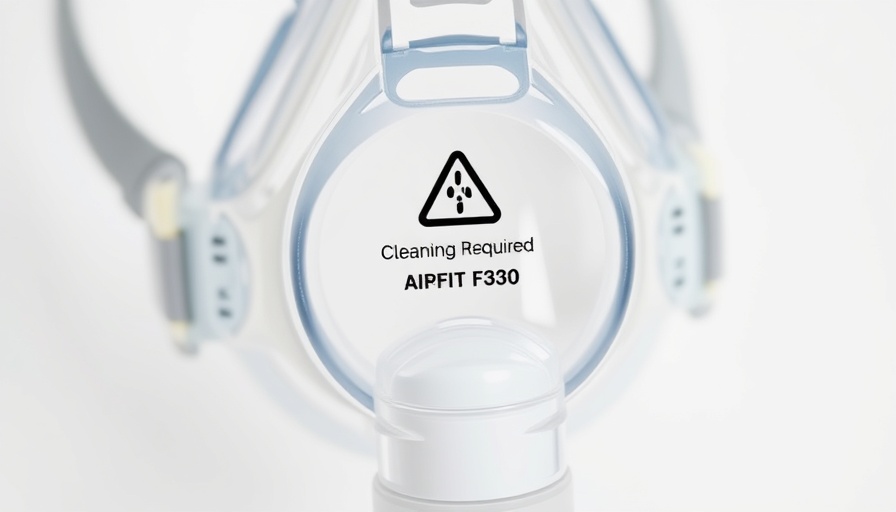
Understanding the AirFit F30 Mask
The AirFit F30 mask plays a crucial role in ensuring quality sleep for individuals with sleep apnea. For parents, it's essential to maintain this mask properly to ensure not just good health for themselves, but also to provide a better sleeping environment for the family. Functioning well, the AirFit F30 allows for effective therapy by delivering the right amount of airflow during sleep, reducing the impacts of sleep disorders like sleep apnea.
Importance of Regular Cleaning
Regular cleaning of the AirFit F30 mask is vital. Not only does it prolong the life of the mask, but it also helps in maintaining sleep hygiene, which is key for quality sleep. Bacteria and mold can grow on unclean masks which can cause respiratory issues and other health problems.
Step-by-Step Cleaning Guide
Follow these straightforward steps to clean your AirFit F30 mask:
- Daily Cleaning: Rinse the mask with warm water to remove oils and debris. Avoid using soap or detergent as it can leave residues.
- Weekly Deep Cleaning: Soak the mask components in a mixture of warm water and mild soap for about 30 minutes. Rinse thoroughly to ensure no soap remains.
- Drying: Allow the mask to air dry completely before using it again to prevent any mold or bacteria build-up.
- Inspect Regularly: Check for wear and tear every month and replace parts as needed.
Creating a Sleep-Conducive Environment
Alongside maintaining the mask, parents can enhance general sleep quality by ensuring a conducive sleep environment. Consider dimming lights an hour before bedtime to signal your child’s circadian rhythm, which helps in better sleep duration and quality.
Implementing Bedtime Routines
Implementing consistent bedtime routines is beneficial for children. This could include calming activities such as reading a book, practicing relaxation techniques, or even yoga tailored for sleep. These practices not only improve sleep hygiene but also foster emotional connections between parents and children, creating a secure and soothing environment necessary for quality sleep.
Nutrition, Exercise, and Sleep
Nutrition and exercise have profound effects on sleep health. Engaging children in physical activities during the day can help regulate their sleep-wake cycle. Likewise, catering to a diet rich in sleep-promoting nutrients can also enhance sleep quality. Foods such as bananas, oats, and almonds may promote better sleep.
Understanding Impacts of Sleep Deprivation
Sleep deprivation can lead to various complications not just for adults but also for children. It can affect cognitive function, mood, and overall health. Parents should strive for a deeper understanding of sleep disorders and how they can impact the family unit. Being informed about signs of sleep deprivation in their children can help parents intervene early and seek appropriate solutions.
Raising Awareness About Sleep Disorders
There’s a wealth of knowledge surrounding sleep medicine that is crucial for parents. Programs geared towards sleep education can empower parents and encourage proactive measures in addressing sleep issues in children. Community awareness campaigns can help spotlight the importance of sleep hygiene, helping families learn how to manage their sleep better.
Conclusion: The Path Forward for Families
Maintaining and cleaning your AirFit F30 mask is integral for ensuring effective sleep therapy. Alongside these practices, fostering a sleep-conducive environment, implementing bedtime routines, and being aware of sleep health are essential steps for parents. Being vigilant about sleep hygiene will not only benefit individuals with sleep disorders but will help create a peaceful and healthy sleep environment for the whole family.
 Add Row
Add Row  Add
Add 




Write A Comment